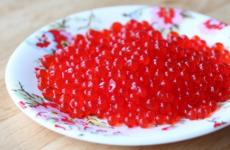What to do to prevent strawberries from rotting. Rot on strawberries - causes and methods of control. New from users
A wonderful early berry, garden strawberry, or as we call it, is always ready to feast on, but also from. One of them, gray rot, is a real punishment of nature.
Initially, it should be said that varieties resistant to gray rot have not yet been bred and any species is susceptible to it to a greater or lesser extent.
Signs of gray mold
If you look for the positive in the bad, then this is what a plant infected with gray mold is immediately visible and impossible to confuse with no other disease.
- First, brown spots appear on the berries, which quickly grow.
- Then a smoky-colored coating forms on them, which, upon careful examination, consists of tiny spores.
- The berry becomes watery and inedible. Even if a small barrel is damaged by gray rot, it cannot be cut off and eaten; it must be thrown away immediately.
- At the end, the berry dries out and turns into a hard gray lump.
Gray mold as a disease
Gray rot also quickly copes with strawberry seedlings if the fungus gets into the soil during planting.
Gray rot is a fungal disease that affects all parts of the plant above the soil.. Since it reproduces by spores that are carried by the wind, insects, rain and dew, not a single plant, even with, is immune from infection.
The source is sclerotia and conidia , which develop very quickly in a humid environment.
It is important to take emergency measures at the slightest sign of disease, since one infected plant, under favorable conditions, can cause the death of up to 90% of the crop.
Path of infection
Humid air and dense planting promote the spread of infection.
At temperatures around zero, conidia germinate within 24 hours, but at summer temperatures 20–30 degrees their pace accelerates and takes between 5 and 9 hours.
A prerequisite: at least a drop of water with carbohydrates.
Microcracks formed by rain falling on the berry release juice, thus creating an environment ideal for the development of fungal spores. The fungus then penetrates into the body of the host that provides nutrition, attaches itself with needle-shaped suckers, and begins to grow at a rate of about 4 mm per day , turning into mycelium that permeates all tissues.
That is why, even with the slightest visible damage, the entire berry is unfit for consumption.
Danger Signs
A strawberry patch in this state will probably get sick from something.
The gardener should be wary and attentive:
- during rainy periods of summer;
- during dry periods, strictly calculate the amount of water for irrigation so as not to create a humid environment necessary for the development of gray rot;
- with heavy dew;
- when the temperature drops to 15 degrees;
- at high air humidity;
- if there are infected plants in other beds. Gray rot affects not only strawberries, but also currants, grapes, cucumbers, etc.;
- with rapid growth of plant leaves and thickening of planting;
- for weeds;
- with the carpet growing method.
Prevention
Since gray mold spreads almost at lightning speed, it is difficult and tedious to fight.
Initially, you need to follow the planting rules, and then you need to care for the strawberries.
Preventive measures, if they do not completely save you from infection, will help to avoid rapid spread. Rot will avoid the plant if:
- they are planted in a well-lit and ventilated place;
- were not injured during planting; the more mechanical damage, the more vulnerable the bush;
- corresponding to a given variety, i.e. planting density, planting location, neighboring crops;
- the soil is loosened and dug up in a timely manner;
- the plant is fed, but not overfed. When overfeeding, strawberry leaves begin to grow rapidly, shading the berries and retaining excess moisture in the ground;
- weeds are regularly removed;
- planting is thinned out;
- diseased berries are immediately removed;
- before flowering, treated with a 1% solution of Bordeaux mixture or a weak solution of potassium permanganate, it should be pinkish in color;
- Mulching perfectly repels gray mold. It is permissible to mulch the soil with sawdust, pine needles or straw, i.e. waste from grain processing. Hay and dried grass are not suitable as they retain moisture;
- you can cover the ground with black film and place the seedlings in the slots, but you must strictly follow the instructions in order to prevent water from accumulating;
- Harvest the crop completely and cut off all the leaves so that new shoots have time to grow before frost.
You can choose varieties with long and powerful peduncles that can support the berries by weight. But each variety has its own undeniable advantages, the disadvantage of which may be that the stems are not long and strong enough.
Mulching
If you cover the bushes with rye stalks during the flowering period of strawberries, then later the ripening berries will appear above the surface of the ground.
Mulching and using film require additional costs. A more economical option is to place plastic tubes or wooden slats along the beds on supports on which the flower stalks are laid.
- Alternatively, they will fit disposable forks , which are stuck into the ground with the teeth up, and the peduncles are fixed between them; if they are large, then a couple of the teeth should be broken off.
- The multi-tiered slide looks beautiful - Strawberries are planted in each tier along the perimeter. With this planting, the berries hang from a hill onto a wooden wall without touching the ground, so the berries are clean. By planting bushes in tiers, they take up less space and the berries are easy to pick.
Fighting gray rot
Whenever treating a plant for gray rot, the entire plant is sprayed.
You should start thinking about the harvest in the fall. The plant is sprayed in early December. Gray mold tolerates frosts and winters without snow, deep digging and other earthworks well.
If you didn’t have time to do prevention in the fall, you should definitely take care of it in the early spring.
Chemical methods
- Gardeners with long experience advise purchasing “ Switch", which effectively fights not only gray mold, but also fusarium, white and powdery mildew. True, they note that you will have to fork out for it. Treat before and after flowering.
Switch is a proven remedy for many of the ills of strawberries.
- « Alirin-B" Available in tablets that need to be diluted in water. But you will have to spray 2 times before flowering and 2-3 times after.
Biofungicide in the form of soluble tablets.
- « Horus" It does not contain phytotoxins, is not washed off by rain, is ten times more economical than other drugs and, according to reviews from most gardeners, does not work. Although some people praise it.
Teldor is used at any stage of strawberry development.
There are many other products, both patented and non-patented, that help to varying degrees. The main thing is to strictly follow the instructions and do not forget that these are chemicals that can cause harm.
Folk remedies
These recipes have been double-tested by gardeners and are passed on by word of mouth.
- Iodine. 10 drops per 10 liters of water. Spray at least once a week both for prevention and for illness;
- Mustard. For 5 liters of hot water use 50 g of powder. Leave for 2 days, then strain and dilute 1:1 with water. Treat in spring.
- Potassium permangantsovka . Dissolve in hot water until bright pink. Spray before flowering. Gardeners recommend adding 2-3 drops of boric acid to improve results;
- Garlic. Grind a couple of cloves, add water and leave in a warm place for a week. Dilute with 10 liters of water, in which dissolve a bar of soap. Spray before flowering. The soap solution will stick the garlic tincture to the leaves, giving it a longer time to work.
- Or all together : crushed garlic – 150 g, soda ash – 50 g, mustard powder – 100 g, tar soap – 20 g, pine needle extract – 1 tbsp, 10 l of warm water. Spray during flowering and while the berries are still green.
- Ash. Infuse 100-200 gr. for 10 liters of water.
Video about biological preparations for gray rot
Gray rot on strawberries is a fungal infection of the berries and the entire plant. It is impossible to confuse this disease with others.
Its external manifestations fully correspond to the name - the berries are covered with a gray layer of “fluffy” mycelium, rot, and spread gray clouds of spores around themselves, which continue to infect everything around.
In different years, depending on weather conditions, gray rot can destroy from 50 to 90% of the berry crop. It is impossible to defeat such an enemy once and for all. The causative agents of the disease live in the soil and plant debris and do not die when frozen in winter or dried out in summer.
But this is not a reason to give up, because gray rot threatens many vegetables, berries, even rose bushes. Methods of combating the disease are the same for all crops; they will help keep the garden healthy and fruitful. 
Strawberry varieties resistant and susceptible to gray rot
There are no varieties of garden strawberries that are absolutely immune to gray rot. From year to year, under different weather conditions, the incidence of varieties fluctuates. You should choose early-ripening varieties - quickly ripened berries do not have time to “stale” and get sick. But among them there are varieties with delicate pulp, which is easily affected by fungus.
Strawberry varieties resistant to gray rot:
- Leningradskaya Pozdnaya;
- Aliso;
- Marvelous;
- Ruby Pendant;
- Redgauntlit;
- Early Dense;Talka;
- VIR Beam;
- Olympus;
- Festival Chamomile;
- Ducat;
- Bravo;
- Fireworks;
- Bohemia.
Strawberry varieties that are highly susceptible to gray mold include:
- Hope;
- Beauty of Zagorje;
- Generous;
- Krasnoselskaya;
- Cinderella;
- Zenga Zengana;
- Relay
Causes of gray rot on strawberries
Sooner or later, every summer resident encounters this garden infection. It is important to know that the following factors increase the risk of a problem:
- like high humidity
- overwatering
- frost
- as well as an abundance of weeds in the garden
Spores of a dangerous fungus are spread by moisture or carried by insects from a diseased plant to a healthy one.
External signs of gray rot
It is easy to identify plants affected by gray rot - individual dark spots first appear on the berries, which grow very quickly, covering the entire berry with a thick grayish coating (these are fungal spores). Brownish spots with a gray coating also appear on the leaves. 
Strawberries that are in direct contact with the ground and with affected plant debris are the earliest to develop gray rot. The disease develops very quickly, especially if the weather is rainy and cold during the berry ripening period. If, when caring for garden strawberries in the spring after the plants bloom, you mulch the soil with hay, straw, sawdust, etc., the possibility of infection of the berries will significantly decrease.
The development of this disease is facilitated by thickened and overgrown plantings, where constant humidity promotes the germination of spores of this fungus.
Prevention of strawberries against gray rot
- Keep the soil free of weeds
- Sprinkle the soil with ash or lime
- Shortly before flowering, it is useful to treat the plantings with Bordeaux mixture or the Barrier preparation.
- After harvesting, all leaves must be removed from the plantings, but this must be done in such a way that the bushes have time to grow healthy leaves before the onset of frost.
- It is advisable to alternate rows of strawberry bushes with rows of onions or garlic.
- Change the place where the crop is grown at least once every three years.
- Use pine litter or straw as mulch.
- Remove diseased berries promptly and completely.
- Harvest the ripe crop quickly and completely.
Varieties with peduncles located above the leaves are less affected by rot. 
Chemicals against gray rot on strawberries
In the fight against gray rot using chemical methods, it is very important to thoroughly cover the entire plant with the drug solution. The first treatment should be carried out at the beginning of flowering, and in case of an emergency, treatments should be continued every 5-7 days until the start of harvest, observing the waiting period for the preparations. As a rule, when growing in open ground, 3 or 4 treatments are needed; in protected ground, 1 or 2 treatments may be sufficient. The fight against gray mold on plantations of day-neutral varieties becomes especially difficult - simultaneous flowering and harvesting does not allow the use of most drugs, so it is important to use drugs with a short waiting period or use biological control methods. Another important part of proper chemical protection is the correct choice of drugs.
Alirin-B. Biological fungicide in tablets. Processing of strawberries with Alirin-B is carried out in 2 stages:
- before the flowering phase – 1-2 times;
- after flowering - 2-3 times (repeated spraying a week later until signs of infection disappear).
The dosage of the drug is 2-3 tablets per 1 liter. water, for prevention – 1-1.5 tablets. They are first dissolved in a small container, and then the liquid solution is added to the total volume.  Fertilizer for pepper seedlings at home
Fertilizer for pepper seedlings at home
It is recommended to carry out no more than two sprays with a minimum interval of 7 days. The average dose of the drug is 10 g per 5 liters. The dose is dissolved in 1/3 of the required volume, after which the reservoir is completely filled.
Treatment of strawberries from rot with folk remedies

- An effective defense against gray rot is iodine. It is used to prepare the composition in a proportion of 10 drops per 10 liters. water. Spraying must be done at least once a week both as a preventive measure and when signs of the disease appear.
- Mustard solution is also used against rot. To treat strawberries in the spring, prepare with a composition prepared according to the recipe: 50 g of dry powder per 5 liters. water. It should be hot, but not boiling water. Infusion time – 48 hours. The composition is filtered and diluted in a 1:1 ratio.
In this article we will look at the phenomenon of rot on strawberries. We will conduct a detailed analysis of the disease and ways to eliminate it using various methods.
Rot on strawberries - studying the signs and methods of control
Causes and signs of the appearance of varieties of rot on garden strawberries:
| Problem name | Reason for appearance | Signs |
| White rot. | Ascomycete fungus Whetzelinia sclerotiorum. Activation of the disease in the ripening phase of berries with dense plantings and excess humidity (irregular watering). |
The berries are covered with white fluff (mycelium) and rot. Lightened leaves dry out. If humidity increases, they rot. The berries are not suitable for consumption. |
| Gray rot. | Fungal infection by the pathogen Botrytis cinerea Pers. It spreads when temperatures drop and humidity increases (rain). Spores are carried by drops of water and gusts of wind. Activation time is spring and summer. |
Affects the entire bush. Brown ovaries and leaves dry out. The spot on the berries grows, changing the shape of the fruit. Strawberries are covered with gray fluff. Touching causes spores to be released. |
| Black root rot. The second name is rhizoctoniosis. | Infectious lesion of strawberry roots by the fungus Rhizopus nigricans Ehrend. Transferred:
Activation – hot summer and the presence of damage on strawberries.. |
The roots stop growing. There are dead black areas on the bush. The lower leaves turn brown. |
| Late blight rot. | Fungus Phytophthora cactorum. Ambient temperature from 10°C to 25°C and precipitation. The activation period is spring and autumn. |
The appearance of brown spots on ripe berries and light brown spots on green ones. The brown stems subsequently die. The fruits acquire a bitter taste. The pulp of the berries becomes coarse, then the fruits dry out. |
| Black rot. | The berries are watery and turn brown. The colorless coating on the fruit turns black. |
Reliable ways to combat varieties of rot on strawberries
Ways to combat different types of rot are:
| Type of rot | Ways to fight |
| White | Spray with chemical compounds “Derozal” (and its analogues), “Chorus”, “Svitich”. |
| Black | Chemical treatment with Ordan |
| Root | Cannot be treated. Dig up and destroy damaged plants. Disinfect the planting site. |
| Fusarium | Spray with “Fundazol”, “Benorad”, “Trichoderma”. Treat the soil with Nitrofen. |
| Gray | Treat with “Derozal”, “Topsin M”, “Switch”. Spray with Bordeaux mixture (3%) |
Preventive measures to prevent the occurrence of rot on strawberries
The main measures are:
- creating conditions for the development of healthy strawberries;
- providing competent care;
- mandatory autumn agrotechnical and preventive measures;
- regular treatment of beds with appropriate compounds.
| Type of rot | Preventative methods |
| Gray. | Good ventilation of the beds. Sufficient lighting. Timely processing and mulching of the soil. Regular weeding of plants. Removing damaged, affected and rotten berries. Competent selection of varieties with low foliage and tall erect peduncles. |
| White. | High-quality selection of planting material. Ensuring ventilation of the beds. |
| Black. | Ensure soil fertility. Sufficient lighting and ventilation. Regular feeding with potassium permanganate (2g per bucket of water). Reducing fertilizing with organic matter and nitrogen fertilizers. |
| Black root. | Warming up seedlings before planting in the ground. Treat the soil with Trichodermin, Extrasol, and Gamair according to the instructions. |
Tip #1. To prevent the spread of root rot, do not plant strawberries in one place for more than the recommended period, or after potatoes.
 Fertilize strawberries in a timely manner to increase the plant’s defenses.
Fertilize strawberries in a timely manner to increase the plant’s defenses. Strawberry varieties resistant and prone to rot varieties
- Leningradskaya Late;
- Marvelous;
- Talku;
- Early Dense;
- Festival Chamomile;
- bohemian;
- Geneva;
- Elvira;
- Honeoye;
- Redgauntlit.
Varieties with tall peduncles are Lord, Nida and Junia Smides. Susceptible varieties. It is undesirable to grow in regions with a humid, cool climate:
- Hope;
- Generous;
- Cinderella;
- The Beauty of Zagorje;
- Relay race;
- Zengu.
 Choose strawberry varieties that are resistant to fungal infections. Carefully study the description of the variety
Choose strawberry varieties that are resistant to fungal infections. Carefully study the description of the variety Recommendations of folk wisdom for combating varieties of rot on strawberries
Common and proven methods are:
- Planting onions (after 35 cm) or garlic (after 25 cm) in strawberry beds.
- Spraying with mustard infusion. Add 100 g of mustard powder to a bucket of hot water and leave for two days. The infusion is filtered and diluted with water (1:1), then sprayed. The timing is when the buds appear.
- Pollination with wood ash. 70 grams of ash per linear meter of area is enough.
- Garlic infusion for spraying. Grind the available amount of garlic, add the same amount of water and leave to infuse for 10 days. Solution - take 25 ml of garlic infusion into a bucket of water.
- Treatment with a composition containing pharmaceutical iodine. Add 10 drops to a bucket of water. The requirement of the method is that it should be carried out regularly once every 7 days. Works as a preventative and therapeutic agent when a problem occurs.
Garden sprayers for protective and preventive measures in a summer cottage
Garden sprayers are presented below:
| Name | Advantages | Inconveniences |
| Backpack Solo-425 | Professional model. Impressive power. Working capacity 15 l with a weight of 4.8 kg. Easy to use. |
Not a budget option. |
| Battery Sadko SPR-15E. | Battery operation eliminates the need for electricity for 4.5 hours. Ergonomic design. Economical use of drugs. Tank volume 15 liters. |
The weight of 6.7 kg is not suitable for all gardeners. |
| Pump Sprayer | Backpack and manual version. The set includes rods of different lengths with a poison supply valve and a nut that regulates the spraying of liquid over a wide range. |
Requires preliminary air injection. |
| Backpack Stihl SG 20 | Possibility of treating plants with protective compounds and liquid fertilizers. Side handle for pumping air. Wide straps that reduce the load on the shoulders and spine. Variety of baits. With a tank volume of 18 liters, weight 5.2 kg. |
No obvious ones were identified. |
| Cordless Makita | Practical acid battery. Charging from standard outlets. Work for 4 hours. Availability of a convenient telescopic tube. |
Some types are supplied without a battery. Not a budget option. |
 Use a sprayer with the most convenient parameters for your site
Use a sprayer with the most convenient parameters for your site Rot on strawberries: reliable preparations for treating garden strawberries
Switch. Systemic two-component fungicide. Sold in packaging from 10 grams per package to 1 kg. Strawberries are processed:
- before flowering;
- before harvest.
Alirin-B. Tableted biofungicide. It is necessary to carry out 2 stages of processing:
- 2 times before flowering;
- 3 times after (spraying is repeated after 7 days until the symptoms of the disease completely disappear).
Dilute 3 tablets of the drug in one liter of water. Prophylactic dose 1.5 tablets. Pre-dissolve the tablets in a small volume of liquid and add to the general one.
Horus. Fungicide against fungal infections. Effective at a temperature of +3°C, used at the beginning of the season. High air temperature (+25°C) shortens the protective time of the drug. The product is quickly absorbed by plants and is not washed off by rain. Economical, consumption is lower than other drugs. Non-toxic to plants and people. Pay attention to these drugs:
- Bayleton;
- Acrobat;
- Fundazol.
Directions for use: strictly according to instructions. Efficiency is high.
Time to use chemicals to treat strawberries against disease
Off-season. Preventive treatment – 1st ten days of November. If you miss the procedure - early March.
Growing season. Primary spraying is carried out at the moment the leaves grow on the plants. Secondary - at the end of budding. The third time - when the harvest is harvested.
Tip #2. Carry out antifungal measures either in spring or summer. Pathogenic fungi are not destroyed by digging and low temperature.
 Apply treatments throughout the season, according to recommendations, to prevent plant rot.
Apply treatments throughout the season, according to recommendations, to prevent plant rot. Mistakes gardeners make when treating varieties of rot on strawberry varieties
Summer residents make typical mistakes that lead to the appearance and spread of dangerous diseases on strawberries:
- The ridges are watered abundantly, even during periods of high humidity. This creates favorable conditions for the development and spread of fungal spores.
- The plantings are being thickened. The close proximity of strawberry bushes to each other contributes to the spread of rot from diseased bushes to neighboring plants.
- Select varieties that are prone to rot. It is necessary to take into account the climatic characteristics of the region, the resistance of varieties to high humidity and fungal diseases.
- Do not mulch strawberry plantings. The berries, in contact with the ground, become infected and begin to rot.
- Nitrogen fertilizers are overdosed when fertilizing, which leads to the growth of green mass and thickening of plantings.
- They do not weed the beds and take the appearance of weeds among the strawberries lightly. Weeds are considered reservoirs of fungal infections in the garden.
- Diseased fruits are not removed in a timely manner, increasing the spread of rot among strawberry bushes.
- They do not carry out preventive work in the off-season and after harvesting.
Tip #3. Do not use compost with the addition of potato tops to fertilize strawberry beds. This threatens the spread of rot on the plants.
Questions from summer residents when dealing with diseases of garden strawberries
 Be sure to mulch strawberry beds to preserve the harvest
Be sure to mulch strawberry beds to preserve the harvest Question No. 1. How long does it take for pathogens of strawberry diseases to die in the soil?
The ridges can be returned to their original location after 4 years. This time is enough for the pathogens to die.
Question No. 2. How to reduce waterlogging in strawberry beds?
To remove excess moisture, place strawberry bushes on high beds. This will allow the wind to blow through the plantings and allow water to flow down from the bushes.
Question No. 3. How to treat the soil in the fall to prevent strawberry rot?
As soon as the harvest is over, treat the soil. Drug options are “Euparen”, “Topaz”, “Switch”. it will be a fitting end to the season.
Question No. 4. Why does thickened plantings increase the risk of strawberries becoming infected with rot?
The close arrangement of bushes leads to the loss of a significant part of the plantings and harvest. Pests and diseases easily spread through dense ridges, plants suffer from nutrient deficiency and weaken. Dense rows are not ventilated, so there is a risk of losing the entire crop.
Question No. 5. What varieties of strawberries are not susceptible to gray rot?
There are no completely resistant varieties to the disease. There are varieties with good resistance, but in rainy and cool summers any type of strawberry is at risk. Choose varieties with tall flower stalks and mulch the beds. Be sure to carry out preventive spraying of plants and increase soil fertility.
Gray rot- fungal disease. Typically, outbreaks occur in years with cool, wet weather. Severe damage to berries occurs in old, thickened areas. Softened brown spots appear on the berries, then they enlarge, and the berries are almost completely covered with a thick gray velvety coating and rot. Diseased berries should not be left in the garden, as the disease spreads through tiny spores throughout the entire area by wind and rain.

Wilt- a fungal disease also known as Verticellosis wilt of strawberries. The fungus damages the roots. As a result, plant growth stops and they die. Affected plants are noticeable even during the budding period. At the end of summer and autumn they stand as if ruffled and withered. Growing varieties resistant to wilt helps. If diseased plants are discovered, they are dug up and burned. Plantations are started only with healthy planting material purchased from nurseries.
At late blight berries are mainly affected. At the same time, brown spots appear on them, which increase in size and eventually cover the entire berry. Spots also appear at the base of the leaf petioles, enveloping them in a ring, causing the leaves to die. The roots also die. Control measures are similar to wilt. In addition, predecessors that are affected by the same disease (potatoes, tomatoes, etc.) should be avoided.
Slugs, snails, centipedes severely damage strawberries, especially in damp, shaded areas with humus soils.
Strawberry nematode- a small worm that settles in strawberry inflorescences between the stamens or in the tissues of the stem or leaves. Plants affected by the nematode are usually underdeveloped and have dwarf growth. The strawberry stems are thickened and twisted, the leaves are wrinkled at the edges and covered with brown spots. The fruits are always underdeveloped. The disease manifests itself most clearly in June-July. The strawberry nematode spreads with seedlings. The area where nematode-affected strawberries grew should not be returned to the area for several years. When planting a new plot of strawberries, you need to take seedlings that are known to be free from the pest and plant them in the new plot.
Strawberry-raspberry weevil damages the buds. The female lays eggs in them, gnawing on the pedicels. One female can damage 50 buds. Control measures: mulching between strawberry rows in the spring, spraying plants with soap or ash solutions.
If there is ants, water these places with a solution of boric acid. You can also mix boric acid into large thin-necked bottles filled with sour milk or syrup and bury them level with the soil so that the ants fall into the bottle and cannot escape.
General treatment of strawberries against pests and diseases in the fall is carried out around the second ten days of September. Process as follows: add 2 tbsp to 10 liters of warm water (30 °C). l. liquid soap, 3 tbsp. l. burnt vegetable oil, 2 tbsp. l. wood ash and 2 tbsp. l. vinegar, stir everything well, strain and immediately sprinkle not only the strawberry bushes, but also the soil.
Strawberries at a summer cottage are often affected by diseases: leaves turn yellow, mustaches grow, shoots change, strawberries rot. Why do strawberries rot on the bush and what to do to prevent it?
The reasons for rotting strawberries may be improper care, fungal diseases, or the appearance of bacterial ones. How to distinguish between them and determine exactly the reason that influenced the rotting of strawberries?
Reasons why strawberries rot:
- Gray rot;
- Black rot;
- Excess moisture;
Gray rot on a strawberry bush
Unripe strawberries on the bush can be affected by gray rot. You can find black fluff on already ripe berries. The gardener should not ignore such manifestations, even if they were only on a few berries.
Causes of gray rot : gray rot, like black rot, overwinters in the ground. It activates in conditions favorable to itself. In addition, gray rot also persists on the affected residues, so all strawberries removed from the site must be burned away from their planting site. The soil mixture is processed, but it is advisable not to plant anything at the previous planting site for several years.
Where does gray mold appear? : The disease spreads to young and ripe berries. It appears in the form of a gray coating, exactly reminiscent of mold. The top berries on a strawberry bush are not affected as extensively as those that are in contact with the ground or located nearby.
Prevention of gray rot : in order to prevent the appearance of the disease, it is necessary not to thicken the garden beds when planting. Moderate dryness is also maintained. Strawberry bushes should be well lit and ventilated. In the spring, a moderate amount of fertilizer is applied, as it acts in the opposite direction, reducing the immunity of already weak strawberries.
How to care for strawberries : beds with strawberries are mulched to prevent gray rot from appearing. The procedure simultaneously preserves moisture and protects against bacteria, mold and fungi that love its excess. You can use: straw, pine needles, sawdust, peat.
How to process strawberries : In spring and after harvest, strawberries are treated with copper oxychloride.
Black rot on a strawberry bush
Black rot manifests itself in almost the same way as gray rot: a grayish-white coating forms on the strawberries on the bush, after which it acquires a characteristic gray color. What is the difference between gray rot and black rot? The difference is that black rot appears on harvested strawberries, and gray rot on still growing ones.
Causes of black rot : causes are similar to gray mold disease. It is also worth noting that black rot is detected mainly during transportation of berries - in closed rooms or boxes there is a risk of damaging the entire crop, and in a fairly short time.
Prevention of gray rot: Strawberries, as it has already turned out, are sown in lighted, open places. Regular ventilation, moderate fertilizing in the spring and watering the rest of the time prevent the appearance of black rot.
How to care for strawberries : beds with strawberries are sprinkled with wood ash. It is also used to treat row spacing - it inhibits the spread of black rot. In the fall, be sure to remove old foliage and do not forget about weeding, since spores remain in the residue.
How to process strawberries : in spring and autumn, water with manganese solution for disinfection.

(No ratings yet, be the first)
READ ALSO:
Fertilizing strawberries after flowering
Trimming strawberry whiskers. What is the point and what are the consequences?
Why do strawberries bloom but no berries?
Video: Growing strawberries vertically in pipes
Strawberry bushes are withering: the reason
Fertilizing strawberries in spring with mineral fertilizers






